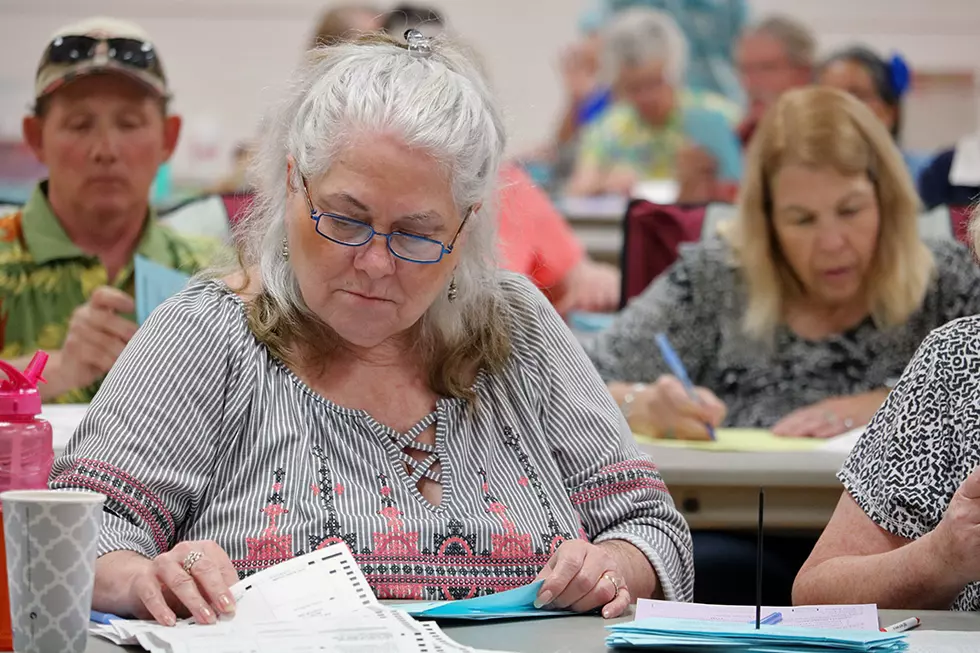
Proposed ballot measures would overhaul Montana election system
Jonathan Abarian
HELENA (KPAX) — If a Montana committee gets its way, voters will have a chance next year to consider a major overhaul of the state’s election system.
Montanans for Election Reform has submitted two proposed initiatives to the Montana Constitution that would change the requirements for electing members of Congress, the governor, state land board officers and state lawmakers.
Frank Garner, a former Republican House member from Kalispell, is one of the committee’s board members.
He says the current election system leaves too many Montanans feeling excluded and creates “chokepoints” that give special interests more influence.
“They believe – all of the people in this growing coalition – that it is not just necessary, that it's imperative that we take back over the system we use to hire people for governing,” he told MTN. “And they believe, like I do, that these reforms are what are necessary to make that happen.”
The first proposed amendment would create a “top-four primary” system. Currently, during primaries, Montana voters receive ballots for all parties, choose one and can vote only for candidates from that party, with the top vote-getter from each party moving on to the general election.
This ballot measure would instead call for candidates from all parties to appear on the same ballot — allowing voters to support candidates from different parties in different races. For each office, the four candidates receiving the most votes, regardless of party, would appear on the general election ballot.
Garner said they wanted to give voters greater choice during the general election when turnout is the highest.
“For those people that believe that choice and competition are a good thing and drive better outcomes, that's a great change,” he said. “But also it helps that over 40% of people who don't feel like they necessarily identify with having to have one ballot or the other.”
Alaska is the only state that currently has a top-four primary after voters approved it in a 2020 ballot measure.
Garner says Alaska has reported fewer uncontested races in the November general election, especially as some areas saw only candidates from one party file in the primary.
Three other states – California, Louisiana and Washington – have similar systems, but with only the top two finishers regardless of party advancing.
The second proposed amendment would require the winner of these elections to get a majority of the vote — more than 50% — and not simply the most votes.
“We think it's important to be able to say that the person that is representing us has the endorsement of the majority of people,” Garner said.
Garner said the measure would task the Legislature with passing laws on how to implement a majority-winner system, with some of the options being a runoff election and a ranked-choice or instant-runoff system.
During the 2023 legislative session, lawmakers approved and Gov. Greg Gianforte signed House Bill 598, which prohibits the use of ranked-choice voting in Montana.
However, Garner told MTN he didn’t think that decision would limit the choices future Legislatures would consider if the majority-winner measure passes.
“I think, once you have the voice of the people of Montana that has been clearly articulated through a vote on these initiatives, I think that will help inform our lawmakers about what people want,” he said. “I know from having been there and experienced that, that's an important data point.”
Six members of Montanans for Election Reform are named as the official submitters of the two ballot measures on the Secretary of State’s website.
Four of them — Garner, Rob Cook, Bruce Grubbs and Bruce Tutvedt — are former Republican legislators who were linked with the “Solutions Caucus,” a more moderate GOP faction.
The fifth, Ted Kronebusch, formerly held a position with the state Republican central committee.
Finally, Doug Campbell is a frequent third-party candidate, having campaigned for U.S. House and the state Legislature as a write-in, Green Party candidate and Libertarian.
The two measures are separate because the Montana Constitution requires any unrelated constitutional amendments be voted on separately.
In fact, earlier this year, Attorney General Austin Knudsen’s office ruled the top-four primary measure violated that requirement and was invalid.
They argued some of its provisions, including limits on signature requirements to qualify for the ballot and a prohibition on showing party endorsements on the ballot, should have been “separate decision points” for voters.
Montanans for Election Reform challenged the attorney general’s decision to the Montana Supreme Court, saying all the provisions were integral parts of the new primary system.
In a unanimous decision last month, the justices agreed and ruled the measure could go forward.
Because both measures are constitutional amendments, it will take more than 60,000 signatures from registered voters across Montana — including a minimum amount in 40 of the state’s 100 legislative districts — for them to qualify for the 2024 ballot.
Garner says that following the Supreme Court’s decision, they expect to be able to begin collecting signatures on the top-four primary amendment by January.
Knudsen’s office is still reviewing whether the majority-winner proposal meets legal requirements, and that process must be completed before signature-gathering can start on that measure.
Each time a ballot measure is cleared by the attorney general’s office, a Montana legislative interim committee then has the opportunity to review it and vote on whether to support or oppose putting it on the ballot.
That decision does not determine whether it can go out for signature-gathering, but the results of that vote are placed on the petition form that voters sign.
The State Administration and Veterans’ Affairs Committee is set to hold its review of the top four primary measure on Friday, December 8, 2023, at 11 a.m.
